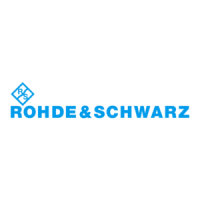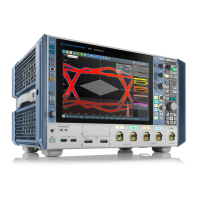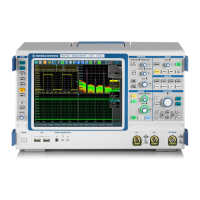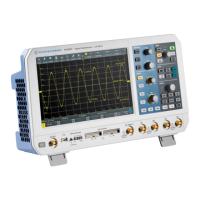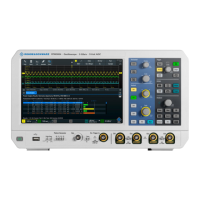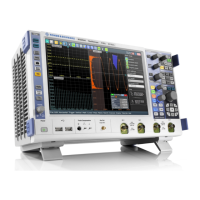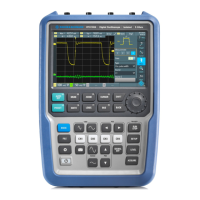Acquisition and waveform setup
R&S
®
RTE
168User Manual 1326.1032.02 ─ 20
Figure 5-3: R&S
RTE setup of multiple waveforms in separate diagrams: best resolution
5.1.1.3 Bandwidth
For analog applications, the highest signal frequency determines the required oscillo-
scope bandwidth. The oscilloscope bandwidth should be slightly higher than the maxi-
mum frequency included in the analog test signal to measure the amplitude with very
little measurement error.
Most test signals are more complex than a simple sine wave and include several spec-
tral components. A digital signal, for example, is built up of several odd harmonics. As
a rule, for digital signals the oscilloscope bandwidth should be 5 times higher than the
clock frequency to be measured.
The oscilloscope is not a stand-alone system. You need a probe to measure the signal
of interest, and the probe has a limited bandwidth, too. The combination of oscillo-
scope and probe creates a system bandwidth. To reduce the effect of the probe on the
system bandwidth, the probe bandwidth must exceed the bandwidth of the oscillo-
scope, the recommended factor is 1.5 x oscilloscope bandwidth. See also: Chap-
ter 5.1.4.1, "Voltage probes", on page 173
5.1.2 Sampling and acquisition
The vertical system of a digital oscilloscope conditions the test signal in a way that the
following A/D converter (ADC) can transform the measured voltage into digital data.
Basics
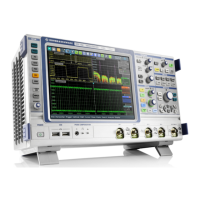
